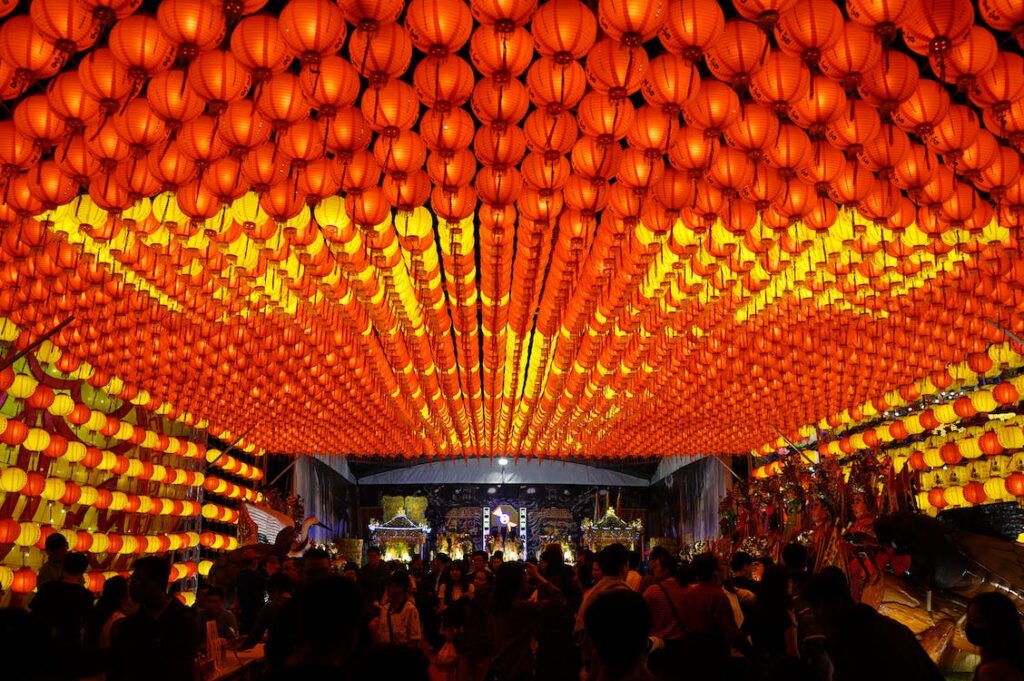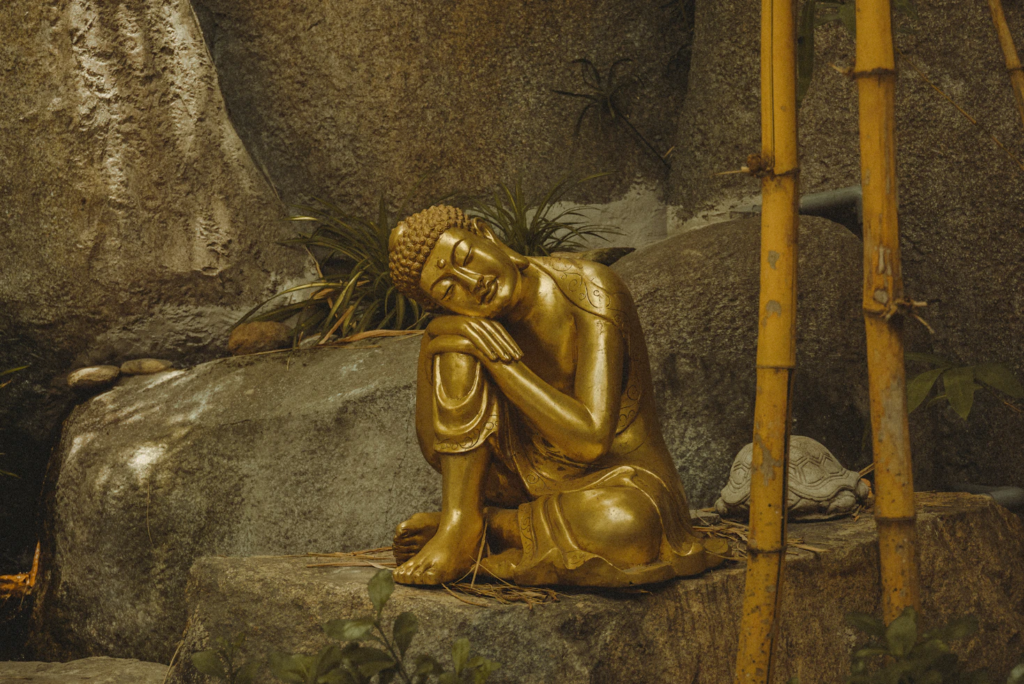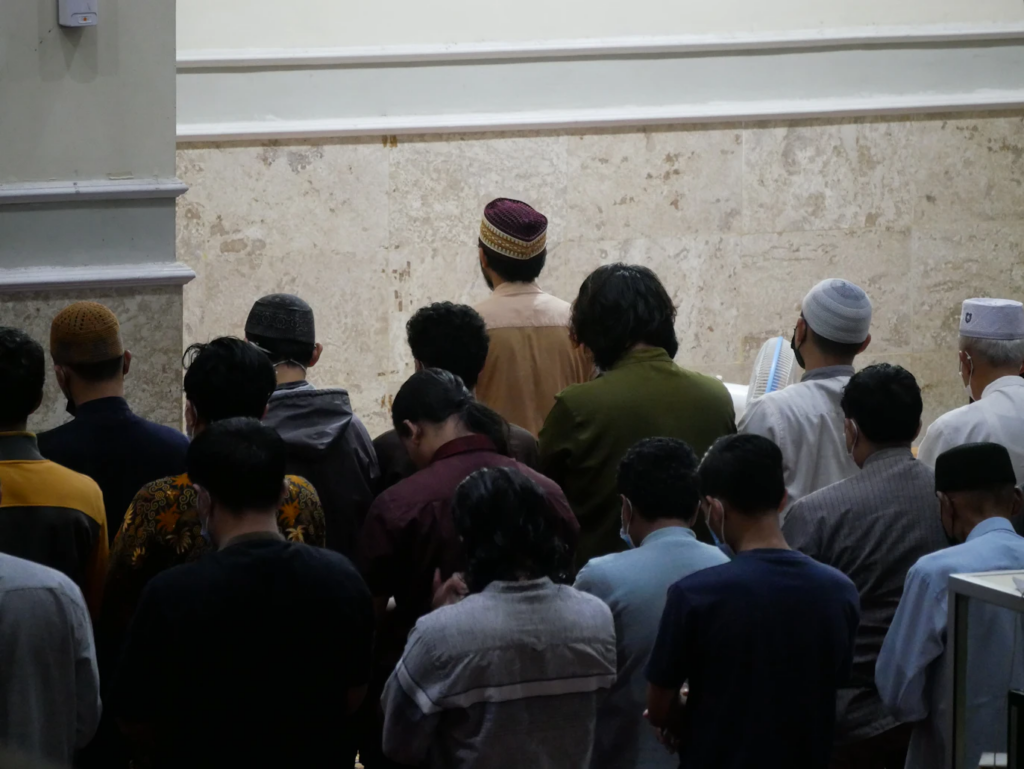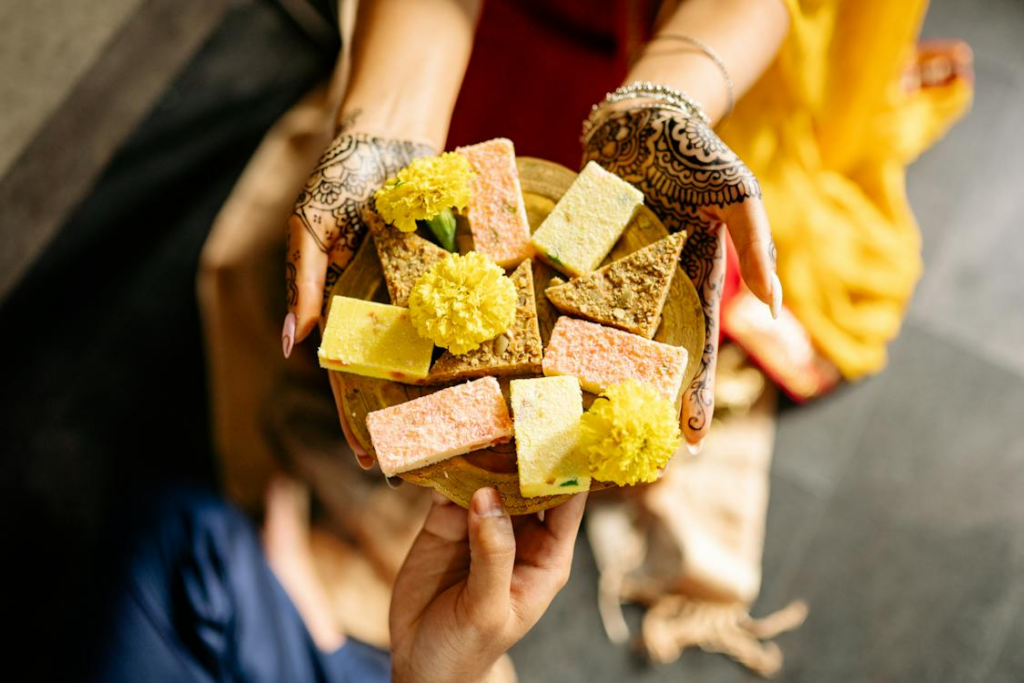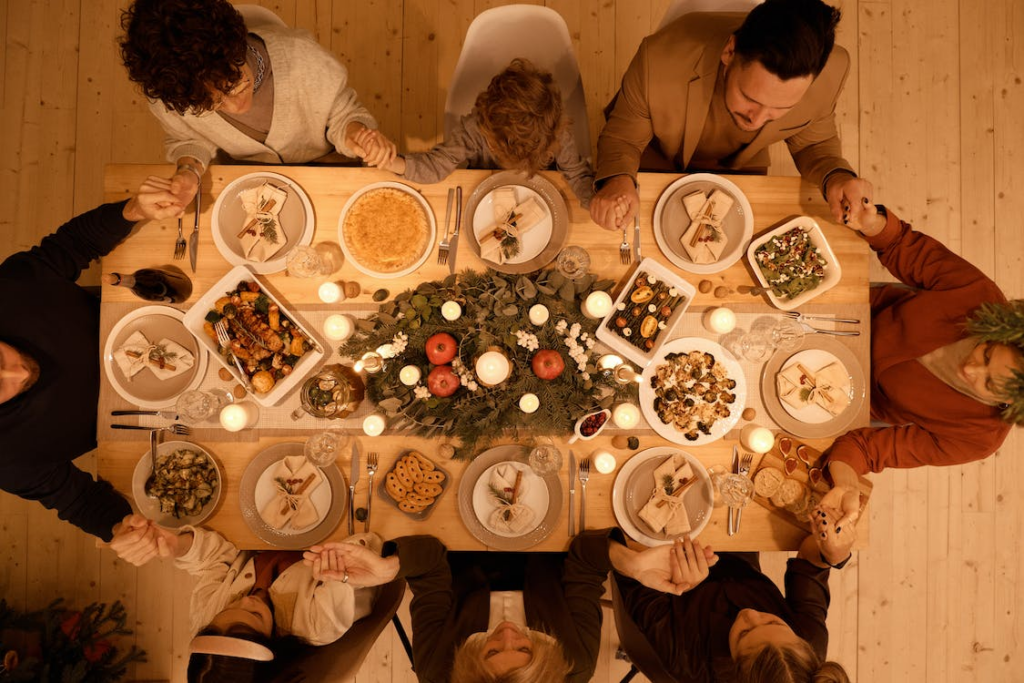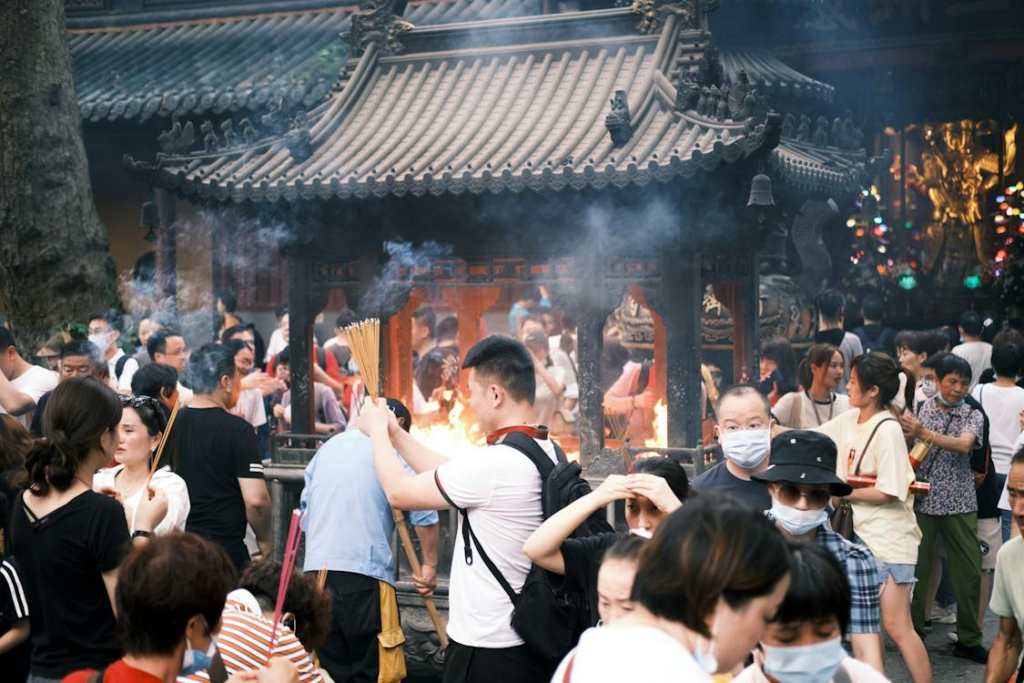"Stay in Singapore this December for a season of joyful Christmas events and delightful holiday markets."

Are you spending the holidays in Singapore this December and not travelling abroad? Don’t worry—December in Singapore is full of festive cheer and exciting events that make staying home just as enjoyable.
The Christmas season in Singapore is lively and full of charm, with the city lit up with beautiful lights and decorations that create a magical atmosphere. From popular streets to shopping centres, the city transforms into a festive wonderland, perfect for getting into the holiday spirit.
To help you make the most of the season, we’ve rounded up the best Christmas events happening around the city. If you’re also looking to do some shopping, there are plenty of Christmas markets worth visiting.
1. Christmas Events
Disney Garden of Wonder
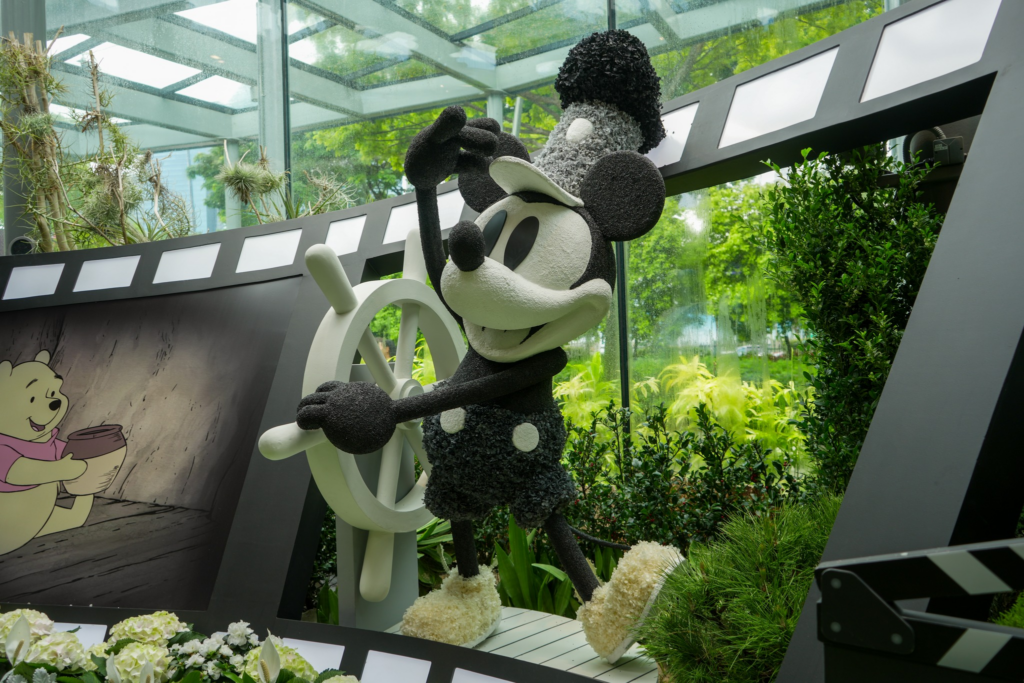
From December 1, 2024, to March 31, 2025, Gardens by the Bay invites visitors to explore the Disney Garden of Wonder at its Floral Fantasy exhibit. Open daily from 10:00 am to 9:00 pm, this is the perfect event for those looking to enjoy a bit of magic or spend quality time with family and friends.
The exhibit features large-scale topiary and floral sculptures of popular Disney and Pixar characters. These eye-catching displays bring beloved characters like Mickey Mouse and Friends, Winnie the Pooh, Ariel from The Little Mermaid, and Woody and Buzz Lightyear from Toy Story to life.
Adding a local touch, some sculptures showcase Disney characters with Singaporean elements. Look out for Donald Duck paired with a playful chilli crab, a favourite local dish, and Stitch appearing to crash-land into a durian stall, referencing the country’s well-known fruit.
Tickets are priced at $12 for adults, with discounts for senior citizens (60 years and above) and children aged 3 to 12, both at $8. Visitors will have the exclusive opportunity to meet and greet beloved Disney icons. Keep an eye on the website for updates and further details about this special feature.
Christmas Train Show

This December, Gardens by the Bay will be debuting the Christmas Train Show, a new festive event made possible through a collaboration with the Embassy of the United States in Singapore. This show brings a century-old American Christmas tradition to Singapore.
The Christmas Train Show features an impressive floral display that showcases miniature train sets surrounded by beautiful plants. Past displays have included replicas of famous American landmarks like the Statue of Liberty, Grand Central Terminal, and the Empire State Building, all set within a scenic holiday scene.
One of the highlights of the show is the Garden Railway Tradition in the U.S., which began in the 19th century alongside full-size railways. The show also includes displays such as the Singapore Rail Journey, Raffles Place MRT Station, and the Swedish Railbus Y7 1113.
The show features a variety of plants to create a festive atmosphere, including Silver Ragwort, Japanese Skimmia, Norway Spruce, Holly, and Poinsettia.
The Christmas Train Show will be held in the Flower Dome and will run from 2 December 2024 to 5 January 2025, open daily from 9:00 am to 9:00 pm.
Ticket prices vary depending on the experience you choose, so visit the Gardens by the Bay website for more information and to book your tickets here.
Christmas Wonderland 2024
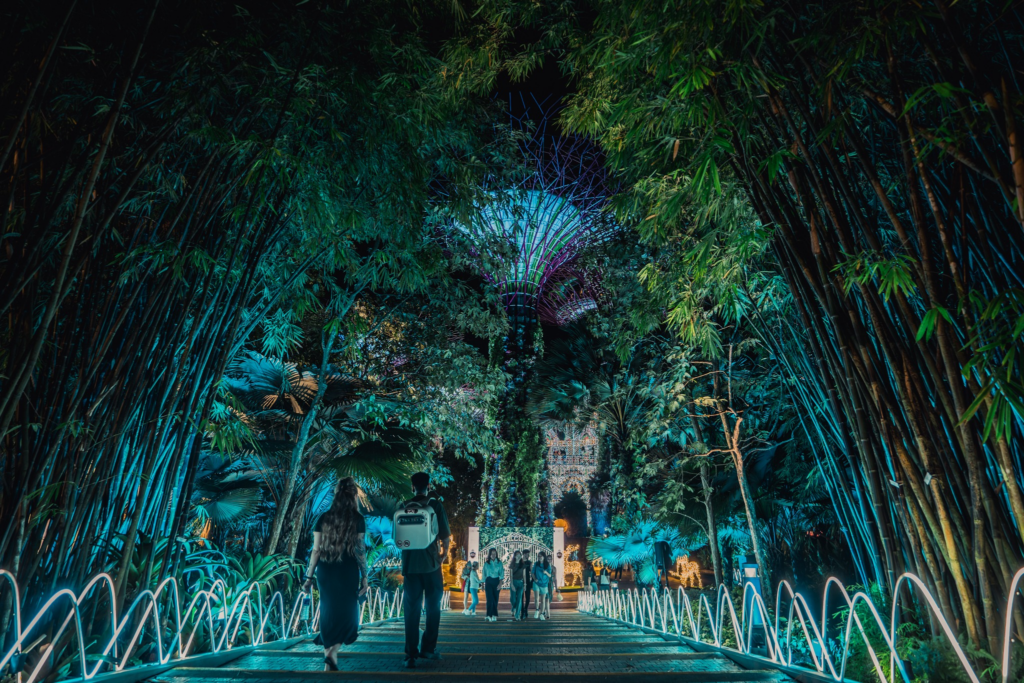
Singapore’s popular Christmas Wonderland is back at Gardens by the Bay, bringing its festive magic to the city. This annual event has become a must-visit for families looking to enjoy the holiday season together.
One of the main highlights this year is the return of the 20-metre Spalliera, a stunning archway decorated with thousands of LED lights. Inspired by Italian Gothic architecture, it features over 100,000 LED bulbs handmade by artisans from southern Italy. The beautiful lighting displays also include giant ornament balls and gift boxes, perfect for photos and a festive stroll.
There’s plenty to do at Christmas Wonderland, from traditional carnival games and rides to the impressive 50-metre-long Walk of Lights tunnel that lights up the night. Kids can also meet Santa Claus and share their Christmas wishes in a special meet-and-greet session.
Food lovers will enjoy a range of holiday treats, including roast beef, turkey platters, pizzas, kebabs, fish and chips, tacos, meatballs, and sausages, as well as sweet shaved ice treats for dessert.
Christmas Wonderland 2024 runs daily from 6.30 pm to 10.30 pm, with the last entry at 10.15 pm. Ticket prices start at $9 for adults and $7 for children, with different prices during specific dates from 6 to 19 December, 20 to 26 December, and 27 December 2024 to 1 January 2025.
2. Christmas Markets
World Christmas Market

Enjoy the festive spirit at the World Christmas Market at The Promontory @ Marina Bay, running from 5th to 25th December 2024. This popular event attracts locals and visitors from across Asia and beyond.
The market features festive food and treats, including customised stockings, real Christmas trees, and decorations. It’s a great place to find special holiday items and enjoy delicious Christmas foods with a local twist, thanks to the variety of local vendors showcasing their festive favourites.
One of the highlights is the solar-powered Christmas tree. The market also supports sustainability with eco-conscious vendors who focus on reducing their environmental impact.
Pet owners will be pleased to know that the World Christmas Market is pet-friendly, with a specially curated Fur Friends Bazaar where pets can find treats and gifts.
Live entertainment is also part of the fun, with local bands and performers taking to the stage throughout the event, creating a lively and festive atmosphere.
Come down to The Promontory @ Marina Bay, 11 Marina Blvd, Singapore 018940, and experience the joy of the season at the World Christmas Market.
Tied Alliance Nordic Market
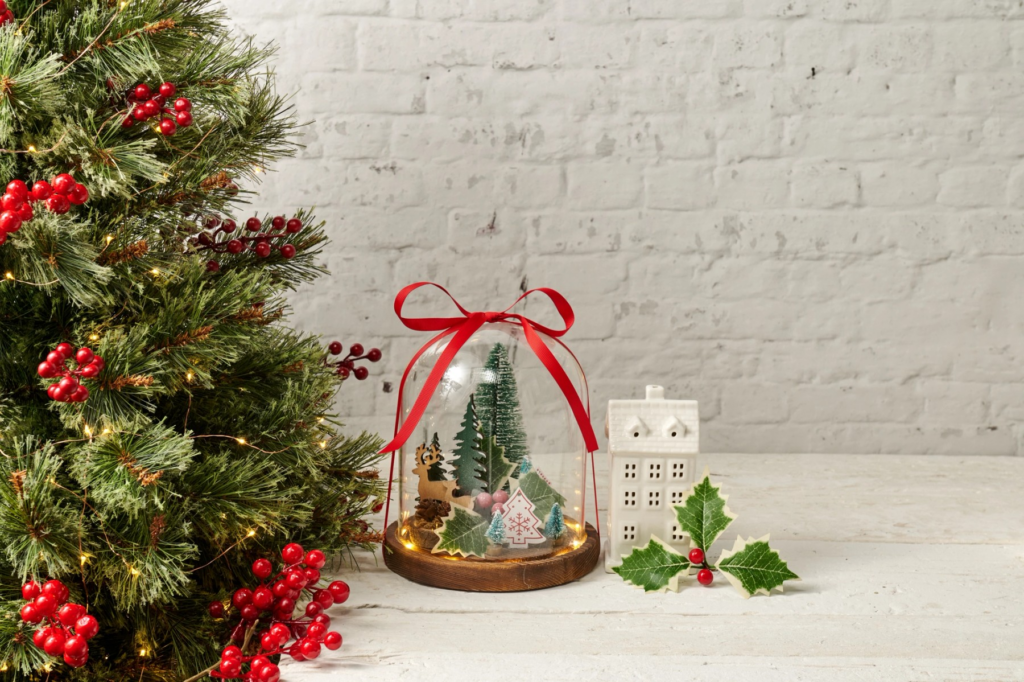
For a taste of Scandinavian Christmas spirit, head to the Tied Alliance Nordic Market at Millenia Walk, 9 Raffles Boulevard, Singapore 039596, available from 9 to 22 December. This festive market brings the charm and traditions of a Nordic Christmas to Singapore.
You can shop for authentic Scandinavian Christmas items, from home décor and gifts to festive essentials that capture the cosy, seasonal atmosphere. Plus, get creative by customising your own wreaths and mini trees to add a personal touch to your holiday decorations.
The market also features unique brands from the Nordic region, offering special crafts and products, along with delightful treats for you to enjoy. This is the perfect place to experience the flavours and sights of a Scandinavian holiday without leaving Singapore.
Christmas Rendezvous
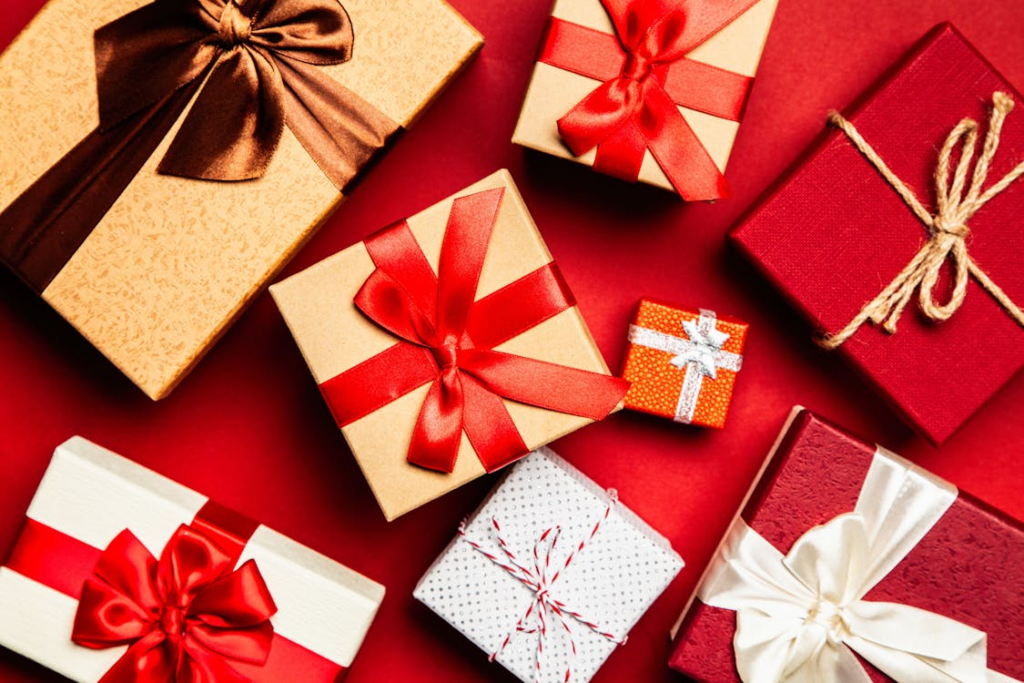
This market is perfect for finding gifts, with a mix of local and international brands making it easy to find something special for everyone. Enjoy a touch of Christmas magic with outdoor snowfall and don’t miss the light projection show.
The Christmas pop-up shops offer tasty treats and unique finds, while live music adds to the festive atmosphere. Make sure to take plenty of photos to capture the moment.
Christmas Rendezvous at Chijmes, located at 30 Victoria Street, Singapore 187996, runs until 25 December. It’s the perfect way to get into the Christmas spirit and enjoy the season in Singapore.
Check out: Christmas Gift Ideas 2023 Edition and Experience the Magic of Christmas Wonderland in 2023

